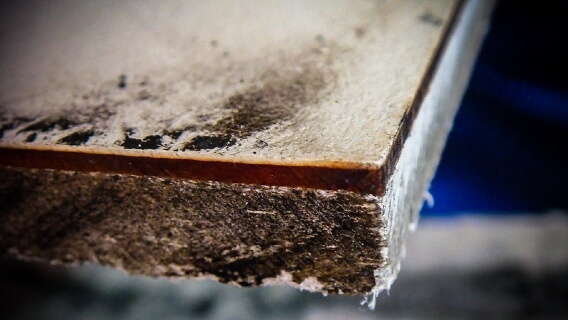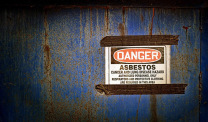Study: Fibers Released from Asbestos Cement Far Exceed Limits
Asbestos Exposure & BansWritten by Travis Rodgers | Edited By Walter Pacheco

The installation and removal of asbestos cement products may put workers at significant health risks, according to a recent study published in the Annals of Work Exposures and Health. The nonprofit organization Occupational Knowledge International found that exposure levels to airborne asbestos exceed the short-term limit created by the Occupational Safety and Health Administration.
Exposure while cutting asbestos cement pipes can be more than 50 times higher than OSHA’s limit. The same study found that working with asbestos boards and corrugated roofing materials led to exposure levels about 24 times over the limit.
The study also found that using water to reduce airborne fibers isn’t enough to protect workers from potential harm. Asbestos cement products, which include siding, pipe and roofing, make up more than 90% of asbestos use worldwide.
“We found that exposures from asbestos cement products could be alarmingly high and certainly disproves the asbestos industry’s contention that these materials can be used in a ‘safe and responsible’ manner,” said Perry Gottesfeld, executive director of Occupational Knowledge International and the author of the study. “The study demonstrates that there is an immediate need to ban all asbestos cement products that are sold in many countries, as these are still being installed in millions of homes and commercial buildings.”
Asbestos Ban & Global Usage
Despite the fact that asbestos is a known health risk, only 60 countries ban the mineral. For now, the U.S. Environmental Protection Agency only requires a notification before manufacturing or importing products that contain asbestos. In 1989, the EPA attempted to ban most asbestos products in the United States, but the U.S. Court of Appeals overturned that ruling at the behest of the product manufacturers.
Globally, Russia and Kazakhstan account for 80% of asbestos production. Both countries export asbestos to more than 25 low and middle-income countries. The largest worldwide importers of asbestos include China, India, Indonesia, Sri Lanka, Thailand, Uzbekistan and Vietnam.
Those countries total about 90% of global asbestos sales. Russia collects the most money from asbestos production, earning $185 million in 2021.
Asbestos Health Risks
Inhaling or ingesting asbestos fibers can cause inflammation, scarring or cancer. The dangerous fibers become trapped in the body for decades before causing major health issues like mesothelioma, lung cancer and asbestosis.
The most common exposure to asbestos is through the workplace. Blue-collar workers, members of the military and people who work in older buildings or schools are at a higher risk of asbestos exposure. Those who live with people who work with asbestos may also be at risk of secondhand exposure. That happens when workers unknowingly bring asbestos home on their work clothes, shoes or tools. Plaintiffs and their legal teams have filed hundreds of thousands of asbestos lawsuits.






